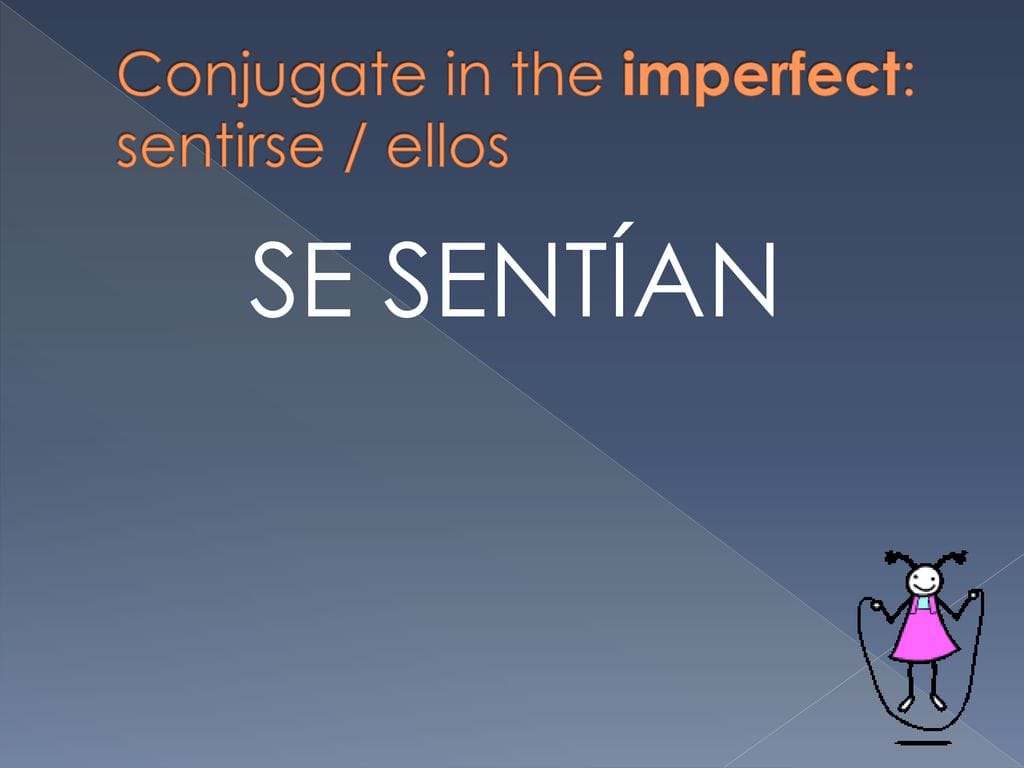Are you feeling overwhelmed by trying to conjugate the Spanish verb “sentirse”? Don’t fret! Check out our comprehensive guide on conjugate sentirse, where we provide detailed conjugations for all tenses and moods, making it a breeze to express your feelings in Spanish.
Feeling Your Way Through Sentirse: A Step-by-Step Guide
Sentirse, meaning “to feel,” is essential for expressing emotions and physical sensations in Spanish. Unlike sentir (to sense or regret), sentirse is reflexive, requiring reflexive pronouns. This guide provides a structured approach to mastering its conjugation.
Understanding Reflexive Pronouns
Reflexive pronouns are crucial for sentirse. They reflect the action back to the subject and change depending on the person:
- me (myself) – yo (I)
- te (yourself) – tú (you, informal)
- se (himself, herself, yourself formal) – él, ella, usted (he, she, you formal)
- nos (ourselves) – nosotros/nosotras (we)
- os (yourselves) – vosotros/vosotras (you, informal plural, Spain)
- se (themselves, yourselves formal) – ellos/ellas/ustedes (they, you formal plural)
Conjugating Sentirse in the Present Tense
The present tense describes how you feel now. The stem often changes from sent- to sient-:
| Pronoun | Conjugation | English Translation |
|---|---|---|
| yo | me siento | I feel |
| tú | te sientes | You (informal) feel |
| él/ella/usted | se siente | He/She/You (formal) feels |
| nosotros/nosotras | nos sentimos | We feel |
| vosotros/vosotras | os sentís | You (plural, informal Spain) feel |
| ellos/ellas/ustedes | se sienten | They/You (plural, formal) feel |
Exploring Other Essential Tenses
Expressing feelings across different timeframes requires various tenses:
| Tense | Pronoun (yo form) | Conjugation | English Translation |
|---|---|---|---|
| Preterite (Past) | me | me sentí | I felt |
| Imperfect (Past Continuous) | me | me sentía | I was feeling |
| Future | me | me sentiré | I will feel |
| Conditional | me | me sentiría | I would feel |
| Present Subjunctive | me | me sienta | That I feel |
| Imperfect Subjunctive | me | me sintiera/me sintiese | That I felt (in subordinate clauses, sintiera is generally preferred) |
Commanding Feelings: The Imperative
The imperative tells someone how to feel:
| Formality | Conjugation | English Translation |
|---|---|---|
| Informal (tú) | siéntete | Feel! |
| Formal (usted) | siéntase | Feel! |
| Informal Negative (tú) | no te sientas | Don’t feel! |
| Formal Negative (usted) | no se sienta | Don’t feel! |
Sentir vs. Sentirse: A Crucial Distinction
Sentir (to sense, regret) and sentirse (to feel emotions/physical states) are often confused. Siento el frío (I feel the cold – sensation) differs from Me siento enfermo (I feel sick – physical state).
Some research suggests the reflexive form evolved to emphasize the internal nature of emotions and physical well-being. However, the precise historical development remains an area of ongoing linguistic study.
Mastering Sentirse: Tips and Common Pitfalls
Common errors include omitting reflexive pronouns or using the wrong tense. Practice, immersion, and embracing mistakes are key to fluency. Experimenting with different adjectives (e.g., feliz, triste, cansado/a) enhances nuanced expression. Consider regional variations; for instance, some dialects might use alternate expressions or have subtle pronunciation differences. Idiomatic phrases like sentirse como en casa (to feel at home) further enrich your communication.
Beyond Conjugation: Unlocking the Nuances of Sentirse
While this guide has covered the core elements of sentirse conjugation, the richness of the Spanish language extends beyond the basics. Some experts believe that subtle variations in intonation and context can convey a broader spectrum of emotions. There’s also ongoing debate among linguists about the origins and evolution of reflexive verbs like sentirse. Exploring these nuances can deepen your understanding and appreciation for the language.
Delving into the French Sentir
The French sentir (to feel, smell) is irregular. Its conjugation follows distinct patterns:
Present Tense of Sentir
| Pronoun | Conjugation | Example |
|---|---|---|
| je | sens | Je sens le vent. (I feel the wind.) |
| tu | sens | Tu sens la lavande? (Do you smell the lavender?) |
| il/elle/on | sent | Il sent le froid. (He feels the cold.) |
| nous | sentons | Nous sentons la fumée. (We smell smoke.) |
| vous | sentez | Vous sentez bon! (You smell good!) |
| ils/elles | sentent | Ils sentent la pluie arriver. (They sense the rain coming.) |
Other tenses like the Passé Composé, Imparfait, and Futur Simple also have unique conjugations. Distinguishing between sentir (physical) and se sentir (emotional) in French is important. Just as in Spanish, ongoing research explores the evolution of sentir and its usage across various Francophone regions.
Focusing on the Stem Change of Sentirse
Sentirse‘s stem changes depending on the tense. In the present tense, it generally shifts from sent- to sient-, except for él/ella/usted (siente) and ellos/ellas/ustedes (sienten). In the preterite, the stem changes to sint- for yo (sentí) and él/ella/usted (sintió). These changes, while seemingly minor, contribute significantly to accurate conjugation.
This stem-changing behavior, common among Spanish verbs, probably developed gradually over time, influenced by phonetic shifts and usage patterns. However, the exact historical process remains an area of linguistic inquiry. Understanding this evolution provides valuable context for mastering the language.
- China II Review: Delicious Food & Speedy Service - April 17, 2025
- Understand Virginia’s Flag: History & Debate - April 17, 2025
- Explore Long Island’s Map: Unique Regions & Insights - April 17, 2025
















